Moniek Bloks's Blog, page 10
July 5, 2025
Book News Week 28
Book News week 28 – 7 July – 13 July 2025
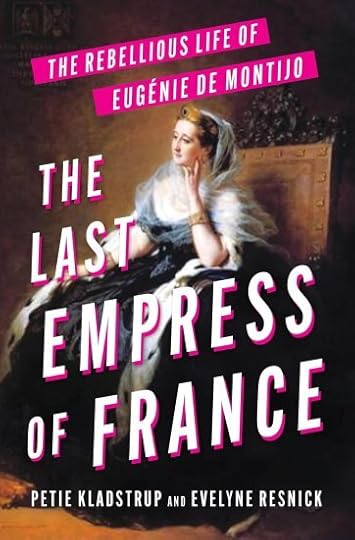
The Last Empress of France: The Rebellious Life of Eugénie de Montijo
Hardcover – 8 July 2025 (US)
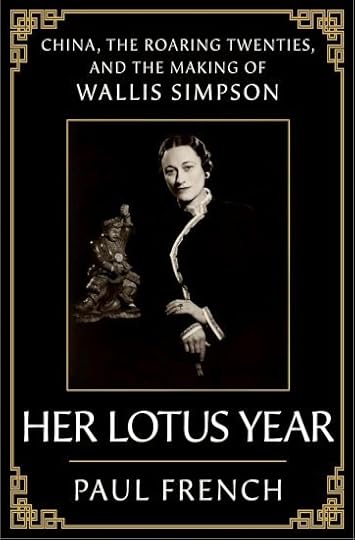
Her Lotus Year: The Making of Wallis Simpson
Paperback – 10 July 2025 (UK)
The post Book News Week 28 appeared first on History of Royal Women.
July 4, 2025
The Year of Queen Sālote Tupou III – The life and death of the future King Tāufaʻāhau Tupou IV (Part two)
Three more children would follow. Princess Sālote Mafileʻo Pilolevu Tuku’aho (born 1951), Prince Fatafehi ʻAlaivahamamaʻo Tukuʻaho (born 1954) and Prince ʻAho‘eitu ʻUnuakiʻotonga Tukuʻaho (born 1959).
In 1949, Queen Sālote announced that Prime Minister Solomone Ata was to retire, and she named the Crown Prince as Prime Minister in his place. He would hold this position for 16 years. Queen Sālote began to take long periods of rest from her royal duties, but the Crown Prince was tireless. He travelled a lot to learn more about how he could improve things in Tonga, and his role as Prime Minister also often took him away from his life in Tonga. In 1957, the Crown Prince received full control over the finances of Tonga – with the approval of the Queen and cabinet and his modernisation ideas went full steam ahead.
Meanwhile, his mother’s health was slowly deteriorating. She was diagnosed with diabetes, she had her teeth removed, and her eyesight worsened. At the end of 1964, she was diagnosed with bone and lung cancer. She underwent several treatments to try and prolong her life. She died on 16 December 1965 in a hospital in New Zealand. Tāufaʻāhau and his wife’s plane was delayed, and they arrived at the hospital two hours after his mother had passed away. He was proclaimed King that same day.
Following a period of mourning, the new King and Queen were crowned on 4 July 1967, which was also the King’s 49th birthday. The service closely followed that of the coronation of Queen Elizabeth II, although the spoken language was Tongan. From the United Kingdom, the Duke and Duchess of Kent represented the Queen. The coronation celebrations lasted an entire week. In 1968, the Treaty of Friendship with the United Kingdom ended with several arrangements. This was followed in 1970 by a visit from Queen Elizabeth II, the Duke of Edinburgh and Princess Anne. They celebrated Tonga’s independence and acceptance into the Commonwealth of Nations.
In 1975, the King led the celebrations for the 100th anniversary of the Tongan Constitution. Among the celebrations was the unveiling of a new statue of Queen Sālote.
In 1977, Tāufaʻāhau’s daughter, Princess Sālote Mafileʻo Pilolevu, married Captain Maʻulupekotofa Tuita, who was the son of the Deputy Prime Minister. They left for England in October, where the Captain was enrolled in a course at Oxford. They went on to have four daughters together, and they also raised the Princess’s nephew. The wedding of Princess Sālote Mafileʻo Pilolevu stirred up rumours about the Crown Prince’s marital state, and there were even rumours of a double wedding. However, the King’s eldest son would remain unmarried. The King’s second son, Prince Fatafehi ʻAlaivahamamaʻo Tukuʻaho, scandalised the family by marrying a commoner, Heimataura Salmon Anderson, in 1980, against his father’s wishes. They managed to leave Tonga for Hawaii, where they received a lecture from Heimataura’s father. Nevertheless, the wedding went ahead in Hawaii.
The King promptly annulled the marriage and removed his second son and any heirs he may have from the line of succession. He was also no longer a Prince. The fairytale was short-lived, and Heimataura died of cancer in 1985. After this, Fatafehi ʻAlaivahamamaʻo Tukuʻaho returned to Tonga. He married ʻAlaileula Poutasi Jungblut in 1989, and they had four children together.
In 1981, the King and Queen attended the wedding of the Prince of Wales and Lady Diana Spencer in London. There were soon more wedding bells in their future as their youngest son was going to marry Nanasipauʻu Vaea. The wedding took place on 11 December 1982. Celebrations lasted for six days. With no partner in sight for the Crown Prince, it seemed likely that Prince ʻAho‘eitu ʻUnuakiʻotonga Tukuʻaho would eventually succeed his brother. Prince ʻAho‘eitu ʻUnuakiʻotonga Tukuʻaho and Nanasipauʻu Vaea went on to have three children together.
As his family grew, the King remained as active as ever. In the 1990s, he became active in the literal sense and took part in a national fitness program, where he lost a lot of weight.
In 2006, the King became gravely ill. The Prime Minister interrupted radio and TV broadcasts to make this announcement and to ask the people of Tonga to pray for their King. He had been in poor health for quite some time. He was in Mercy Hospital in Auckland, where he died on 10 September 2006.
He was succeeded by his eldest son, who became King George Tupou V.
The post The Year of Queen Sālote Tupou III – The life and death of the future King Tāufaʻāhau Tupou IV (Part two) appeared first on History of Royal Women.
July 3, 2025
The Year of Queen Sālote Tupou III – The life and death of the future King Tāufaʻāhau Tupou IV (Part one)
When Queen Sālote Tupou III of Tonga succeeded to the throne upon the death of her father, King George Tupou II, she was barely 18 and around six months pregnant.
On 3 July 1918, Queen Sālote and her husband were finally able to move back into the Royal Palace following the period of mourning. The following day, she gave birth to a son – the future King Tāufaʻāhau Tupou IV. There was a European doctor present who apparently frightened her by laying out several instruments. Sālote later recalled that it was “not a reassuring sight.”1 A Tongan midwife delivered the baby after jokingly telling her, “I wonder if he thinks you have brain fever instead of a baby.”2 The doctors rushed out to tell Sālote that the child was a boy weighing 11 pounds. He was named after his great-great-great-grandfather, Taufa’ähau Tupou I. The name had been chosen by Sālote’s father before his death. The baby was healthy and strong, but Sālote had internal tearing, which would cause problems later on.
The Crown Prince would later be joined by two younger brothers, Prince Uiliami Tukuʻaho, who died at the age of 16, and Prince Sione Ngū. After the birth of the youngest brother, Queen Sālote went to New Zealand for several months for a much-needed break. She left Tonga at the end of October with her three sons, three female companions, and attendants to look after her and the children.
Following their return from New Zealand, the three princes were sent to a woman named Rachel for early instruction and discipline. All three had to be trained as future leaders, but especially Taufa’ähau as the future King. They had a strict childhood, and they were disciplined with beatings. Reportedly, Taufa’ähau never cried, unlike his younger siblings.
After some time with Rachel, the boys were sent to the Wesleyan “European School.” Dorothy Ferguson, who taught the youngest two, later wrote of their spoilt behaviour, “I had to reprimand Prince John [Sione Ngū] for punching another boy in the eye. Smacked his hand (far too softly) and stood him in the corner. He did not worry about.”3 They later also attended Tupou College.
The second brother, Prince Uiliami Tuku‘aho, had been sickly for much of his life. At the end of 1935, he was seriously ill again, and his mother cared for him personally. By April 1536, it was clear that he was dying. It seemed that everyone knew, but it was never spoken out loud. Queen Sālote asked Dr Wood to see her son, and he diagnosed dropsy. On 23 April, 30 pints of fluids were drained. The area around them went quiet – there was no music, and the annual Anzac Day was limited to a brief prayer. The young Prince died on 28 April around 11.30 P.M. After months of caring for her son, Queen Sālote completely broke down. She and her husband went to visit Sydney for rest and a medical check-up.
Crown Prince Tāufaʻāhau then enrolled as a law student at the University of Sydney, while Prince Sione Ngū spent three years with a private tutor in Auckland to prepare for his attendance at Newington College in Sydney.
In 1941, Tāufaʻāhau’s father became unwell. On 19 July, he had dinner at the British Residency. The following day, he went to church and had lunch before laying down for a nap. He suffered a heart attack in his sleep. Instead of an official lying-in-state, Queen Sālote had his body brought to her own room in the palace. His body rested there until 22 July and was then brought down so that the final respects could be paid. During this time, both Crown Prince Tāufaʻāhau and Prince Sione Ngū were in Sydney, and they had asked their mother to delay the final ceremonies of the funeral until they were back in Tonga, but they were unable to return home for Christmas. Queen Sālote then decided to go ahead, meaning that the Princes missed the ceremonies. At the end of 1942, Taufa’ähau completed his studies.
He returned home to Tonga on 12 December 1942 with two bachelor’s degrees – arts and law. He was the first Tongan to graduate from university. He had been gone for quite some time, and his mother lamented, “The pity is that he feels and thinks like a European… there has to be a complete change to make everything Tongan again in order for him to carry out his true responsibilities.”4 Tāufaʻāhau wanted to modernise Tonga, which concerned his mother. Despite this, she gave him to government posts. He became Minister for Education on 1 February 1943 and Minister for Health on 6 November 1944. In 1945, he was given his late father’s title of Tungī.
In 1947, both Princes simultaneously announced their betrothals. A double wedding was organised so that the people wouldn’t be burdened with the cost of two separate weddings. The Crown Prince’s bride was Halaevalu Mataʻaho ʻAhomeʻe. The wedding took place over three days, from 10 to 12 June 1947. There was a European ceremony on 10 June and a traditional Tongan ceremony on 12 June. Both couples were married at the Royal Chapel. Queen Sālote was delighted to have daughters at last, and she was especially fond of Melenaite, whom she often took with her, even on extended visits. The Crown Prince and his new wife went to live at Pikula, about two kilometres from the Royal Palace.
Their first child was born on 4 May 1948. It was a boy – the future George Tupou V.
Part two coming soon.
The post The Year of Queen Sālote Tupou III – The life and death of the future King Tāufaʻāhau Tupou IV (Part one) appeared first on History of Royal Women.
Margaret of York’s crown comes to the Netherlands for exhibition
Margaret of York’s crown, one of only two surviving English medieval crowns, will come to the Netherlands to be part of an exhibition.
Philip the Good, Charles the Bold and Mary the Rich will be the three central generations in the exhibition “Burgundians in Limburg.” Visitors will be immersed in Philip’s imposing theatre, the power hunger of Charles and the stability of Mary. They will learn what influence the Burgundians had in the life of the average medieval person.
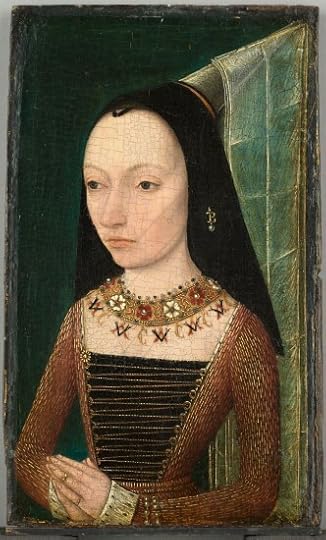 © GrandPalaisRmn (musée du Louvre), Tony Querrec.
© GrandPalaisRmn (musée du Louvre), Tony Querrec.Two of the showpieces will be Margaret of York’s crown and Margaret of York’s portrait. Margaret gifted the crown to the Cathedral of Aachen, where it has been kept for 550 years. Neither of these objects has been on display in the Netherlands before.
Because of the unique nature of the loans, the exhibition will be rather brief. It can be visited at the Limburgs Museum in Venlo from 4 October 2025 to 1 February 2026. Plan your visit here.
The post Margaret of York’s crown comes to the Netherlands for exhibition appeared first on History of Royal Women.
V&A Museum to host exhibition on Marie Antoinette’s fashion
The V&A Museum will host the exhibition “Marie Antoinette Style.”
The exhibition will feature 250 objects, including loans which have never been outside of Versailles or France. It will include rare personal items from Marie Antoinette, including her silk slippers and jewels from her private collection. You will also be able to see costumes made for the screen, such as those from Sofia Coppola’s Marie Antoinette.
A scent experience will re-create the scents of the French court and the perfume Marie Antoinette wore.
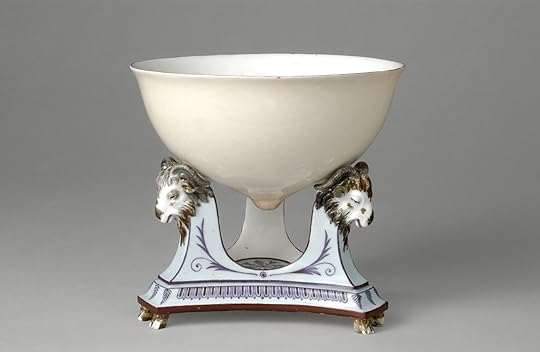
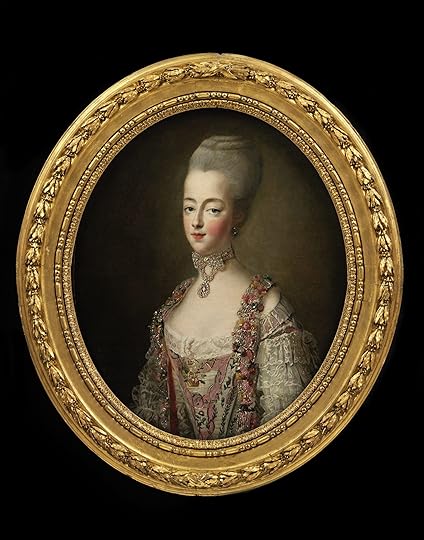
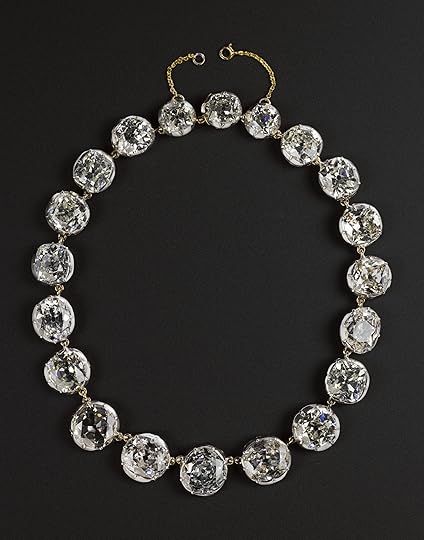
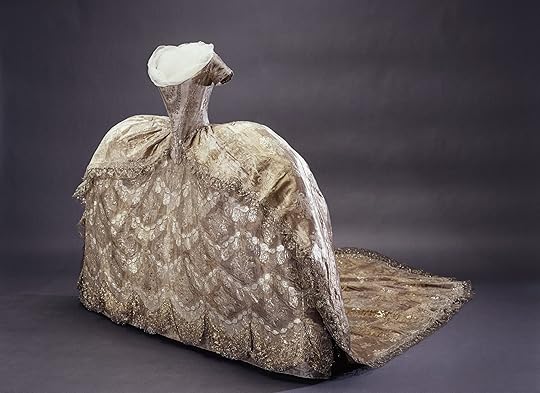
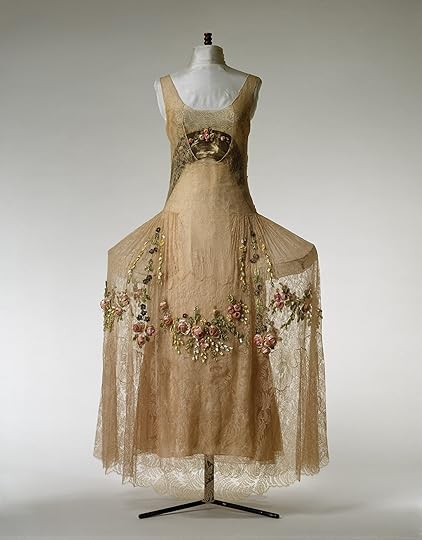
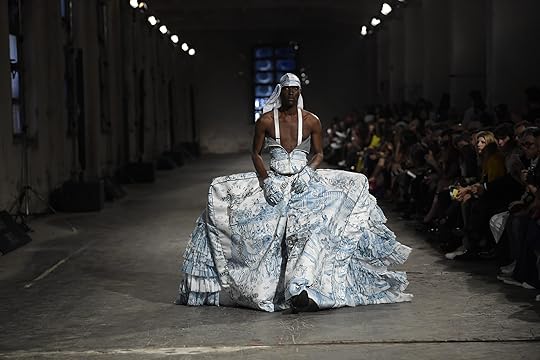
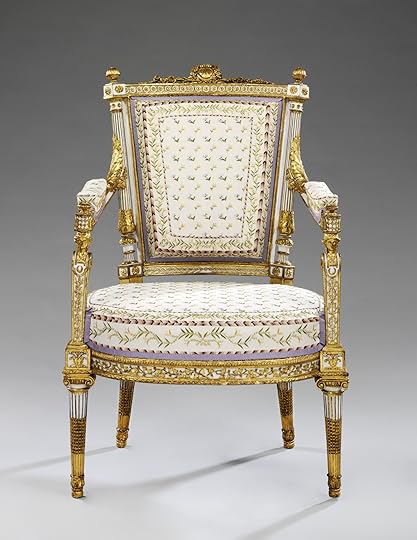
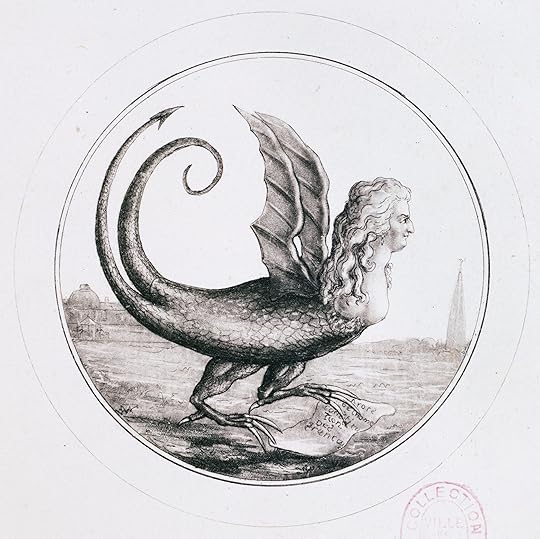
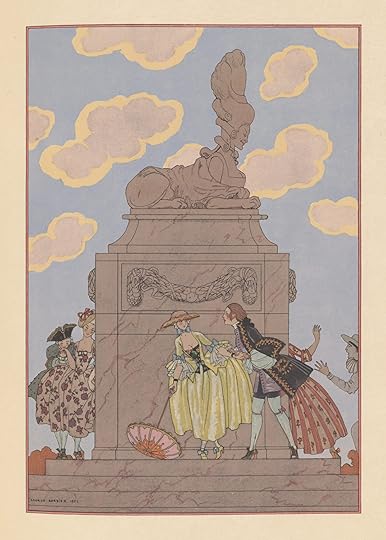
![Kate Moss, Fashion: Sarah Burton for Alexander McQueen, Van Cleef & Arpels, and Julian d'Ys, The Ritz, Paris 2012. [photographs of Kate Moss at the Paris Ritz for Vogue US April 2012 issue] © Tim Walker.](https://i.gr-assets.com/images/S/compressed.photo.goodreads.com/hostedimages/1751921035i/37044941._SX540_.jpg)

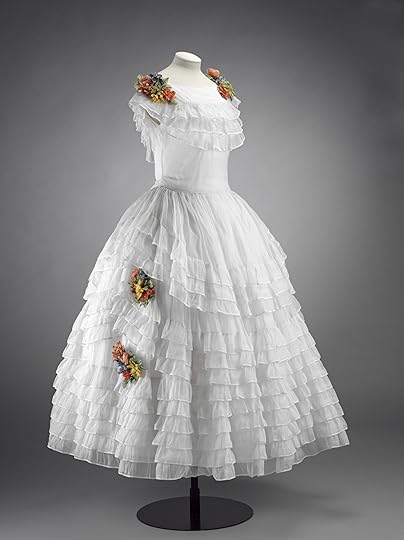 [image error]
[image error]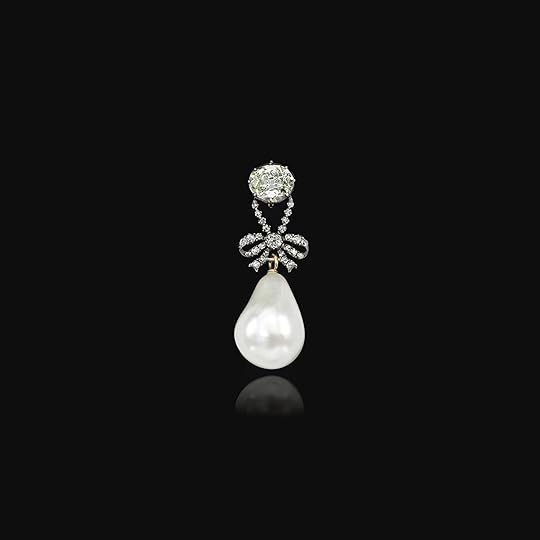

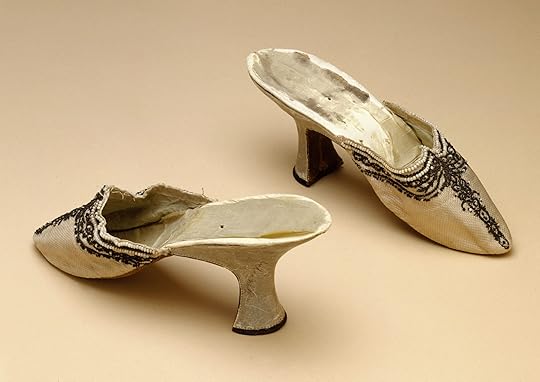
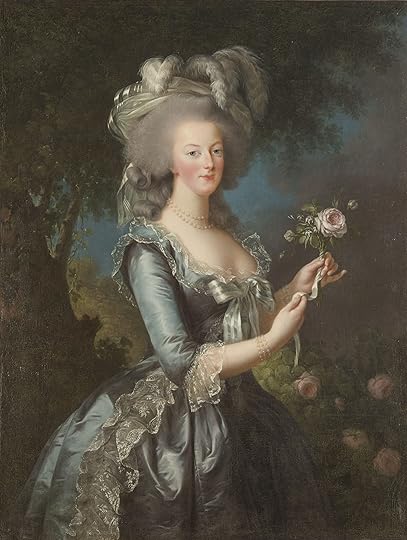
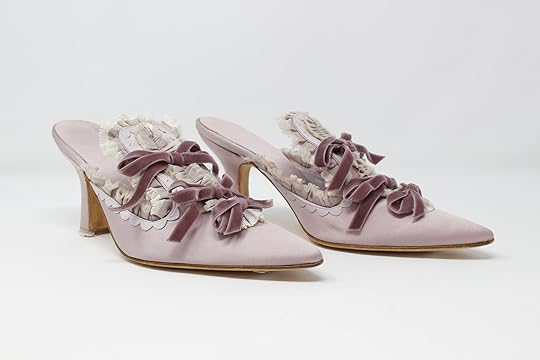
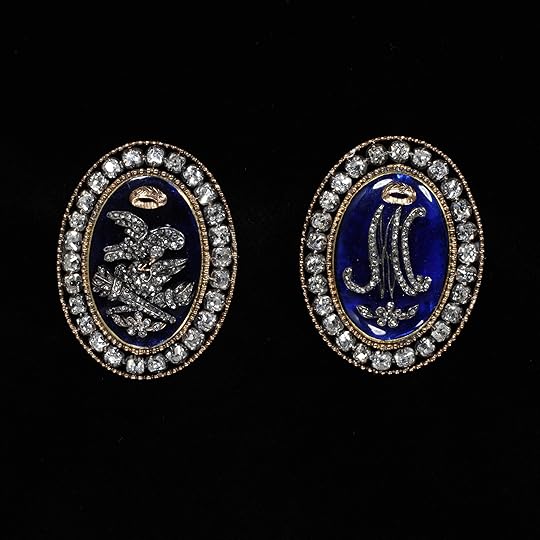
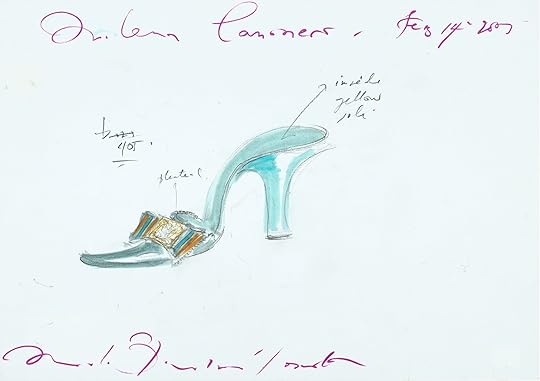
Sarah Grant, Curator of Marie Antoinette Style, said: “The most fashionable, scrutinised and controversial queen in history, Marie Antoinette’s name summons both visions of excess and objects and interiors of great beauty. The Austrian archduchess turned Queen of France had an enormous impact on European taste and fashion in her own time, creating a distinctive style that now has universal appeal and application. This exhibition explores that style and the figure at its centre, using a range of exquisite objects belonging to Marie Antoinette, alongside the most beautiful fine and decorative objects that her legacy has inspired. This is the design legacy of an early modern celebrity and the story of a woman whose power to fascinate has never ebbed. Marie Antoinette’s story has been re-told and re-purposed by each successive generation to suit its own ends. The rare combination of glamour, spectacle and tragedy she presents remains as intoxicating today as it was in the eighteenth century.”
The exhibition “Marie Antoinette Style” runs at the V&A South Kensington from 20 September 2025 to 22 March 2026. Tickets can be bought here.
The post V&A Museum to host exhibition on Marie Antoinette’s fashion appeared first on History of Royal Women.
July 2, 2025
Empress Chu Lingyuan – The Last Empress of the Jin Dynasty
Empress Chu Lingyuan was the last Empress of the Jin Dynasty. She was Empress to Emperor Gong of the Eastern Jin Dynasty. However, her life was very turbulent.[1] Her husband was forced to abdicate. She was betrayed by her own brothers, who killed her son and husband.[2] Therefore, Empress Chu Lingyuan was a tragic figure.[3]
In 343 C.E., Empress Chu Lingyuan was born in Yangzhai (modern-day Yuzhou) in Henan Province.[4] She was the grand-niece of Empress Dowager Chu Suanzi. Her father was Chu Shuang (the prefect of Yixing).[5] She had three brothers named Chu Xiuzhi, Chu Danzhi, and Chu Yuzhi.[6] She eventually married Sima Dewen (the Prince of Langya). Princess Chu Lingyuan gave birth to two daughters named Sima Maoying (the Princess of Haiyan) and Princess Fuyang. Other than her name, nothing else is recorded of Princess Fuyang.[7]
On 28 January 419 C.E., Liu Yu (the Duke of Song and Counsellor-In-Chief) murdered Prince Sima Dewen’s brother, Emperor An of the Eastern Jin Dynasty.[8] Duke Liu Yu installed Sima Dewen as Emperor of the Eastern Jin Dynasty. On 12 February 419 C.E., Chu Lingyuan was invested as empress. Emperor Sima Dewen’s reign was short-lived because Duke Liu Yu wanted to make himself emperor.[9] In 420 C.E., Duke Liu Yu appointed Fu Liang to draft an edict for Emperor Sima Dewen to abdicate.[10] It was said that Emperor Sima Dewen was happy to abdicate because he found reigning to be burdensome.[11] He signed his abdication on red paper to show that it was a joyful event. Emperor Sima Dewen’s abdication marked the end of the Jin Dynasty.[12] Liu Yu ascended the throne as Emperor of the new Liu-Song Dynasty.[13] The Liu Song Dynasty only lasted fifty-nine years, which was from 420 to 479 C.E..[14]
After the abdication, Emperor Sima Dewen was given the title of Prince of Lingling.[15] The former Empress Chu Lingyuan was made Princess of Lingling. They resided in Moling (near modern-day Nanjing in Jiangsu Province).[16] They were given the privilege of using the imperial coaches and robes.[17]
Princess Chu Lingyuan’s brothers were greedy and ambitious.[18] They eagerly served Emperor Liu Yu of the Liu-Song Dynasty.[19] They constantly monitored Prince Sima Dewen.[20] When Princess Chu Lingyuan gave birth to a son, her brothers killed him under Emperor Liu Yu’s orders.[21] Emperor Liu Yu also made no secret of wanting Prince Sima Dewen’s death.[22] Therefore, Prince Sima Dewen and Princess Chu Lingyuan were so frightened that they stayed in one room and did not leave it.[23] Prince Sima Dewen spent his days studying Buddhism.[24]
In 421 C.E., Emperor Liu Yu decided it was time for Prince Sima Dewen to die.[25] He ordered Princess Chu’s brother, Chu Danzhi. to give Prince Sima Dewan poisoned wine.[26] Chu Danzhi took his personal soldiers, arrived at Prince Sima Dewen’s mansion, and demanded that he drink the poisoned wine.[27] Prince Sima Dewen refused to drink the poison.[28] Prince Sima Dewen said, “Buddhist teachings say that if a person commits suicide, he cannot be reincarnated again.”[29] Realising that they could not force Prince Sima Dewen to drink the poison, Chu Danzhi’s soldiers strangled him.[30] After Prince Sima Dewen’s assassination, he was made the posthumous Emperor Gong, which means “the Respectful.”[31] He was buried with the rites of an emperor in Chongqing Mausoleum.[32]
Little is known about Princess Chu Lingyuan after Emperor Gong’s death.[33] Her elder daughter, Princess Sima Maoying of Haiyan, married Emperor Liu Yu’s son, Prince Liu Yifu.[34] In 422 C.E., Emperor Liu Yu died, and Liu Yifu became Emperor of the Liu-Song Dynasty. Sima Maoying was invested as empress.[35] In 422 C.E., Emperor Liu Yifu was assassinated. Empress Sima Maoying of Haiyan was given the title of Princess of Yingyang and then was made the Princess of Nanfeng.[36] On 7 August 436 C.E., Princess Chu Lingyuan died at the age of fifty-three.[37] Princess Chu Lingyuan was buried beside her husband, Emperor Gong. She was buried with the rites of an empress. She was given the posthumous name of Empress Gongsi.
Empress Chu Lingyuan could barely control the tragic events in her life.[38] Her life after being an empress was filled with tragedy.[39] Empress Chu Lingyuan lived in fear and rarely left her own room.[40] She lost both her son and husband.[41] Therefore, Empress Chu Lingyuan witnessed the fall of her dynasty and the beginning of a brand new dynasty.[42]
Sources:
iNews. (n.d.). “The Tragic Life of Sima Dewen, Emperor Gong of Jin”. Retrieved on 25 November 2024 from https://inf.news/en/history/6fcd788fe....
Theobald, U. (16 June 2018). “Jin Gongdi 晉恭帝Sima Dewen 司馬德文”. Chinaknowledge.de- An Encyclopedia on Chinese History, Literature, and Art. Retrieved on 25 November 2024 from http://www.chinaknowledge.de/History/....
[1] iNews, n.d., “The Tragic Life of Sima Dewen, Emperor Gong of Jin”
[2] iNews, n.d., “The Tragic Life of Sima Dewen, Emperor Gong of Jin”
[3] iNews, n.d., “The Tragic Life of Sima Dewen, Emperor Gong of Jin”
[4] iNews, n.d., “The Tragic Life of Sima Dewen, Emperor Gong of Jin”
[5] iNews, n.d., “The Tragic Life of Sima Dewen, Emperor Gong of Jin”
[6] iNews, n.d., “The Tragic Life of Sima Dewen, Emperor Gong of Jin”
[7] iNews, n.d., “The Tragic Life of Sima Dewen, Emperor Gong of Jin”
[8] Theobald, June 16, 2018, “Jin Gongdi 晉恭帝Sima Dewen 司馬德文”
[9] Theobald, June 16, 2018, “Jin Gongdi 晉恭帝Sima Dewen 司馬德文”
[10] Theobald, June 16, 2018, “Jin Gongdi 晉恭帝Sima Dewen 司馬德文”
[11] Theobald, June 16, 2018, “Jin Gongdi 晉恭帝Sima Dewen 司馬德文”
[12] Theobald, June 16, 2018, “Jin Gongdi 晉恭帝Sima Dewen 司馬德文”
[13] Theobald, June 16, 2018, “Jin Gongdi 晉恭帝Sima Dewen 司馬德文”
[14] Theobald, June 16, 2018, “Jin Gongdi 晉恭帝Sima Dewen 司馬德文”
[15] Theobald, June 16, 2018, “Jin Gongdi 晉恭帝Sima Dewen 司馬德文”
[16] Theobald, June 16, 2018, “Jin Gongdi 晉恭帝Sima Dewen 司馬德文”
[17] Theobald, June 16, 2018, “Jin Gongdi 晉恭帝Sima Dewen 司馬德文”
[18] iNews, n.d., “The Tragic Life of Sima Dewen, Emperor Gong of Jin”
[19] iNews, n.d., “The Tragic Life of Sima Dewen, Emperor Gong of Jin”
[20] iNews, n.d., “The Tragic Life of Sima Dewen, Emperor Gong of Jin”
[21] iNews, n.d., “The Tragic Life of Sima Dewen, Emperor Gong of Jin”
[22] iNews, n.d., “The Tragic Life of Sima Dewen, Emperor Gong of Jin”
[23] iNews, n.d., “The Tragic Life of Sima Dewen, Emperor Gong of Jin”
[24] Theobald, June 16, 2018, “Jin Gongdi 晉恭帝Sima Dewen 司馬德文”
[25] Theobald, June 16, 2018, “Jin Gongdi 晉恭帝Sima Dewen 司馬德文”
[26] iNews, n.d., “The Tragic Life of Sima Dewen, Emperor Gong of Jin”
[27] iNews, n.d., “The Tragic Life of Sima Dewen, Emperor Gong of Jin”
[28] iNews, n.d., “The Tragic Life of Sima Dewen, Emperor Gong of Jin”
[29] iNews, n.d., “The Tragic Life of Sima Dewen, Emperor Gong of Jin”, para. 19
[30] iNews, n.d., “The Tragic Life of Sima Dewen, Emperor Gong of Jin”
[31] Theobald, June 16, 2018, “Jin Gongdi 晉恭帝Sima Dewen 司馬德文”, para. 6
[32] iNews, n.d., “The Tragic Life of Sima Dewen, Emperor Gong of Jin”
[33] iNews, n.d., “The Tragic Life of Sima Dewen, Emperor Gong of Jin”
[34] iNews, n.d., “The Tragic Life of Sima Dewen, Emperor Gong of Jin”
[35] iNews, n.d., “The Tragic Life of Sima Dewen, Emperor Gong of Jin”
[36] iNews, n.d., “The Tragic Life of Sima Dewen, Emperor Gong of Jin”
[37] iNews, n.d., “The Tragic Life of Sima Dewen, Emperor Gong of Jin”
[38] iNews, n.d., “The Tragic Life of Sima Dewen, Emperor Gong of Jin”
[39] iNews, n.d., “The Tragic Life of Sima Dewen, Emperor Gong of Jin”
[40] iNews, n.d., “The Tragic Life of Sima Dewen, Emperor Gong of Jin”
[41] iNews, n.d., “The Tragic Life of Sima Dewen, Emperor Gong of Jin”
[42] Theobald, June 16, 2018, “Jin Gongdi 晉恭帝Sima Dewen 司馬德文”
The post Empress Chu Lingyuan – The Last Empress of the Jin Dynasty appeared first on History of Royal Women.
July 1, 2025
Princess Marie-Louise of Madagascar – The last heir of Madagascar
Princess Marie-Louise of Madagascar was born on 1 May 1897 as the daughter of Princess Razafinandriamanitra and an unnamed French officer. Her mother was a niece of Queen Ranavalona III of Madagascar and tragically died five days after giving birth to her daughter.
Marie-Louise was conceived during the French occupation of Madagascar, and her mother reportedly “took pleasure in lusting after the French lieutenants.”1 She was also “the talk of the capital’s elite because of her tumultuous love affairs.”2 She was most notably “seriously in love with an orderly officer of Colonel Voyron.”3 She was just 14 years old at the time but already “amicably separated from a husband who’s fed up, and she’s highly courted.”4
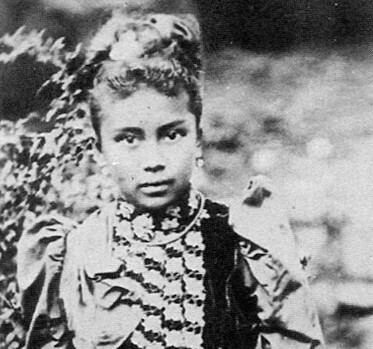 Princess Razafinandriamanitra (public domain)
Princess Razafinandriamanitra (public domain)In February 1897, the French took complete control of Madagascar. The monarchy was abolished on 28 February 1897. Princess Razafinandriamanitra, by then pregnant, followed her mother, Princess Rasendranoro, to join her aunt, Queen Ranavalona III, in Toamasina. The Queen had refused to leave without her pregnant niece, and it was finally promised that she would follow in a second convoy. They finally arrived on 8 March, and the pregnant Princess could finally rest.
Two days later, they boarded the La Peyrouse, although the Queen’s departure was quite a dangerous operation. The ship headed to Réunion, an island under French rule, where they were to live in exile. They arrived at the capital of St. Denis and settled into the Hotel de l’Europe. Not long after their arrival at the hotel, Princess Razafinandriamanitra went into labour. On 1 May, Marie-Louise was born – the illegitimate child of a Princess and a French officer. She was baptised as a Catholic to appease the people of Réunion in the Saint-Denis Cathedral, with about 20 people present. Queen Ranavalona stayed at the hotel, suffering from agoraphobia.
It soon became clear that Princess Razafinandriamanitra was not recovering quickly from the birth, and she was diagnosed with puerperal fever. There was nothing the doctors could do, and she died on 6 May 1897, leaving little Marie-Louise an orphan. Princess Razafinandriamanitra was buried in Saint-Denis Cemetery.
Queen Ranavalona and her entourage, including Marie Louise, soon moved from the hotel to Madame de Villentroy’s house in Saint-Denis, but they would not be allowed to stay on Réunion. In 1899, the Queen and her entourage boarded the Yang-Tse, which brought them to Marseille in 28 days. The Queen hoped that they would be allowed to settle in Paris. They spent several months in Marseille before being informed that they would be relocated to a villa in Algiers. Little Marie-Louise spent most of her time in the care of servants, along with one of the servants’ daughters.5 It was not a good situation to grow up in, as the household was known to enjoy alcohol a bit too much. One indescrete servant told a tram full of people that “they drink like fish!”6
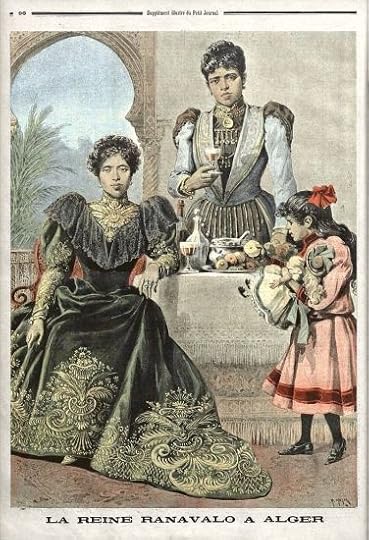 Queen Ranavalona III in exile in Algiers, with her aunt Ramasindrazana and her niece Marie-Louise (public domain)
Queen Ranavalona III in exile in Algiers, with her aunt Ramasindrazana and her niece Marie-Louise (public domain)In May 1901, Queen Ranavalona was finally permitted to visit France, and she took Marie-Louise with her. A ship took them to Marseille, and a train later took them to Paris. During stops, little Marie-Louise waved at people outside. They end up staying in Paris for a month. Journalists are fascinated by her and also by little Marie-Louise, who is mocked for her origins. When asked by a reporter what she wanted to be when she grew up, Marie-Louise answered, “I will be a general!”7 Shortly before their departure from France, Marie-Louise came down with a bit of a cold.8 Over the next few years, the Queen would be allowed to travel to France several times, and Marie-Louise usually accompanied her.
By 1908, Marie-Louise was sent to the Lycée de Jeunes filles de Versailles. She still spent time with her great-aunt, and her living expenses came out of the Queen’s allowance she received from the government of Madagascar. After her health declined – she suffered from prolonged nosebleeds and colds – she was enrolled in private classes with Mademoiselle Cornu in Versailles. Her condition soon began to improve again. She lived with the protestant Groszer sisters, who took great care of her.9
On 23 May 1917, Queen Ranavalona died suddenly of an embolism at the age of 55. This made the now 20-year-old Marie-Louise the next head of the dynasty and titular Queen of Madagascar. She continued to receive a pension from the government of Madagascar, but it could not have been much, as she had to take a job as well. On 24 June 1921, Marie-Louise married André Bossard, an agricultural engineer. During the war years of 1939 and 1945, Marie-Louise worked as a nurse and earned the Legion of Honour.
Her life after her great-aunt’s death is somewhat obscure. She and her husband never had any children, and they eventually divorced. She was known to have been elegant, and she smoked Lucky Strike cigarettes. Her nickname was Loulou, and she remained close friends with the Groszer sisters.10
Marie-Louise, the would-be Queen of Madagascar, died on 18 January 1948 in Bazoches-sur-le-Betz, Loiret, France. She was 50 years old. She was buried in the Cimetière de Montreuil.
The post Princess Marie-Louise of Madagascar – The last heir of Madagascar appeared first on History of Royal Women.
June 30, 2025
Prince’s Palace in Monaco to host “Grace #1” exhibition
The Prince’s Palace in Monaco will host a new exhibition called “Grace #1” during the summer.
According to the Prince’s Palace, it will be a “sensitive and unique invitation to rediscover the luminous and multifaceted personality of Princess Grace.”
 Photo: Bob Adelman photos/Prince’s Palace of Monaco
Photo: Bob Adelman photos/Prince’s Palace of MonacoThe exhibition was made by Natalia Mlodzikowska, Exhibitions Manager at the Collections Department of the Prince’s Palace of Monaco and General Curator, and guest artistic curator Marie-Eve Mestre. It will draw from collections and archives of the Prince’s Palace and will have photographs, personal objects, jewellery and accessories belonging to Princess Grace. Never-before-seen portraits will be displayed alongside the items in various formats.
The exhibition will be structured around four themes: the natural young woman, immortalised on the beaches of Jamaica; the everyday woman, elegant and discreet; the loving and attentive mother; and the amateur photographer and filmmaker.
“Grace #1” will take place at the State Apartments of the Prince’s Palace of Monaco from 5 July to 14 September 2025.
The post Prince’s Palace in Monaco to host “Grace #1” exhibition appeared first on History of Royal Women.
June 29, 2025
The early years of Charles II’s Portuguese Queen
To celebrate the US release of Susan Abernethy’s book Charles II’s Portuguese Queen, The Legacy of Catherine of Braganza learn more about Catherine’s early life.
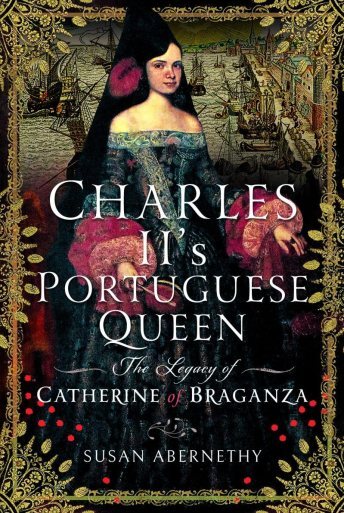
Written by Susan Abernethy
As rebellion against Spain gained traction and the whispering of revolution began, the Duke and Duchess of Braganza lived in their palace of Vila Viçosa, to the east of Lisbon. The duke remained as far away as possible from the turmoil in the Spanish government of Portugal and the intrigues of his friends. He preferred to live the life of a country gentleman, devoting his life to his wife and children. Vila Viçosa was a pleasure palace with every imaginable amusement.
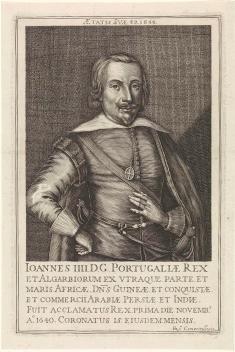 John IV, King of Portugal, Catherine’s father (public domain)
John IV, King of Portugal, Catherine’s father (public domain)John VIII, Duke of Braganza was the wealthiest and most powerful nobleman in Portugal. The Spanish minister to King Philip IV, Gaspar de Guzman y Pimentel, 1st Duke of Sanlúcar, 3rd Count of Olivares, known as the Count-Duke of Olivares, had arranged a marriage with his relative, Luisa Maria Francisca de Guzman, with Duke John in 1634. The couple began their family, starting with the birth of a son, Teodósio, in February 1634. A daughter, Ana, died shortly after birth in early 1635. Joana, Princess of Beira, was born nine months later, and then Catarina Henriqueta de Bragança appeared on November 25, 1638. A son Manuel died in infancy, followed by Afonso in 1643 and Pedro in 1648, both of whom would become King of Portugal.
They baptised Catherine on Saturday, December 12, 1638, in the ducal chapel of the palace by Anthony de Brito e Sousa, dean of the chapel. Many nobles from the family of Braganza and their supporters attended the baptism. The Infanta Catherine, named after Saint Catherine of Alexandria, on whose feast day she was born, was in the care of her nurse, Marian of Lancaster, and she grew up in a peaceful and sheltered environment. Her entire family adored her, and people instantly took to her when they met her. The atmosphere at Vila Viçosa was kind and loving. She was especially close to her father and her brother, Teodósio. The Duke was content and happy living in his luxurious palace, managing his estates, which encompassed one-third of the entire kingdom.
During Catherine’s early years, her father had several meetings with his steward, Dr. John Pinto Ribeiro, among others, to discuss a coup and the restoration of the Portuguese monarchy. The Duke had deliberated on the prospect of ascending the throne with his wife, who was an enthusiastic supporter. These meetings culminated in a critical discussion on November 25, 1640.
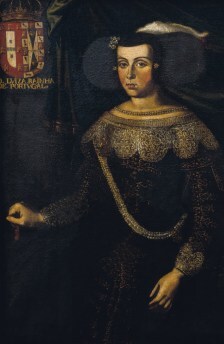 Luisa Maria Francisca de Guzman, Queen of Portugal, Catherine’s mother (public domain)
Luisa Maria Francisca de Guzman, Queen of Portugal, Catherine’s mother (public domain)On this date, there was a splendid second birthday party for Catherine at the palace. The pageantry of the festivities concealed the actual intention of the gathering of the many friends of the Duke and Duchess. Shortly before this party, the Habsburg Vicereine’s government had summoned the Duke to Madrid to discuss his mission in leading troops in his capacity as commander of the Portuguese army, to counteract a rebellion against Spain in Catalonia.
He hesitated and made his excuses to the government in Lisbon as long as he could without being arrested for disobeying orders. His appearance in Madrid was mandatory, or the intended coup must go forward immediately. Now, with a party of one hundred and fifty gentlemen, most of them heads of families, with all of their servants, along with two hundred citizens and operatives in attendance, discussions took place on the restoration of the Portuguese monarchy.
The duke hesitated to take up the call to arms on the side of Spain as he had everything to lose and nothing to gain from doing so. During the birthday party, they asked if he would definitively and categorically consent to becoming King of Portugal. With the Duchess by his side, she persuasively pointed out to him the hazards of leaving Portugal and going to Spain, insisting he risked death. The story of her holding up the Infanta Catherine and asking him if he would deny making her a royal princess is probably apocryphal, but Luisa convinced him, and the duke consented to being proclaimed King if the planned coup proved successful.
The nearly effortless overthrow of the Spanish government took place in Lisbon on December 1. On December 25, ten days after her father’s acclamation as King John IV of Portugal, Catherine left Vila Viçosa and moved to Lisbon with her mother, her brother Teodósio and her sister
Joanna. They settled into their new residence, the royal Ribeira Palace, on the banks of the Tagus River. The next time we hear of Catherine is her attendance at the baptism in the Royal Chapel of her brother Afonso on September 13, 1643, along with her mother and her sister.
The routine of the Portuguese court was austere, sombre, and monotonous, with strict, highly formal etiquette and ceremony. The nobles were stiff and solemn. They secluded women in severe and rigorous privacy. Well-born girls were intentionally preserved from the contamination of the world, shut up like nuns until they found husbands. Duennas fiercely guarded them, forbidding them even to speak to a man outside of their family.
Catherine, along with every other daughter of the House of Braganza, was no exception to the enforcement of these stringent precepts. They gave her an education equivalent to that taught in a convent. There is some evidence that she received her education in a convent very near the royal palace, with her mother thoroughly supervising her instruction.
Due to a few historical references, this was most likely the Dominican O Convento do Sacramento (Convent of the Holy Sacrament) of Alcântara. Construction on the convent finished in 1620 and accommodated women of the high nobility who lived in great seclusion and austerity. It is unclear if Catherine lived in the palace and the nuns taught her there, or if she actually lived in the convent during her education. It is also possible they took her to the convent, if not daily, at certain intervals.
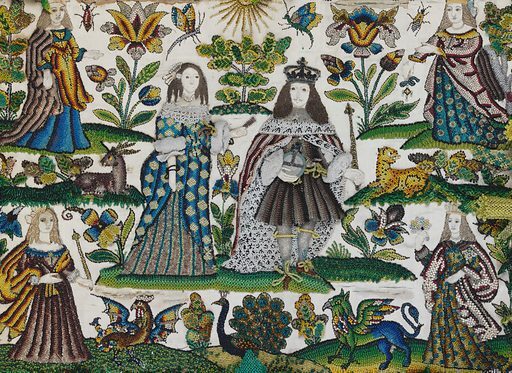 King Charles II and Catherine of Braganza with allegories of the four continents (after 1662). Accession number: 39.13.1 (public domain)
King Charles II and Catherine of Braganza with allegories of the four continents (after 1662). Accession number: 39.13.1 (public domain)During these years, Queen Luisa laboured with great intent to make a prestigious marriage for Catherine, including a match with King Louis XIV of France and with the Prince of Wales, the future King Charles II of England. Following the restoration of the Stuart dynasty, this match came to the forefront and was finalised in early 1662. Catherine left the convent, was given her own household and properties and income commensurate with her status as the future Queen of England. She departed Lisbon in April and sailed to Portsmouth to meet her future husband.
Susan’s passion for history began over fifty years ago and led her to study the subject for her degree at the University of North Carolina at Charlotte. Her blog, The Freelance History Writer, has been continuously publishing articles on European medieval, Tudor, early modern and women’s history since 2012.
Her debut non-fiction book, Charles II’s Portuguese Queen: The Legacy of Catherine of Braganza, is available now in the UK and the US. Her second book, The Formidable Women Who Shaped Medieval Europe: Power and Patronage in the Burgundian Court, is available for pre-order from Amazon UK. She is currently working on her third non-fiction book.
The post The early years of Charles II’s Portuguese Queen appeared first on History of Royal Women.
June 28, 2025
Book News Week 27
Book News Week 27 -30 June – 6 July 2025
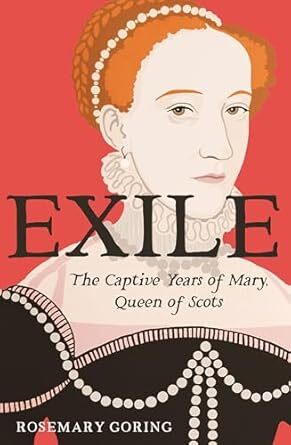
Exile: The English Years of Mary, Queen of Scots
Hardcover – 3 July 2025 (UK)

Elizabeth I: The Making of a Queen
Paperback – 30 June 2025 (US)
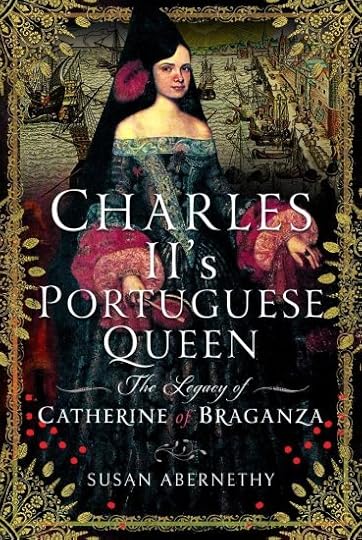
Charles II’s Portuguese Queen: The Legacy of Catherine of Braganza
Hardcover – 30 June 2025 (US)

The Final Year of Anne Boleyn
Paperback – 30 June 2025 (US)

Catherine, the Princess of Wales
Paperback – 3 July 2025 (UK)
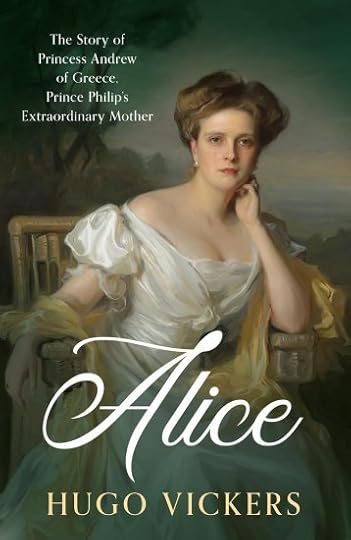
Alice: The Story of Princess Andrew of Greece, Prince Philip’s Extraordinary Mother
Kindle Edition – 3 July 2025 (US)

Tudor Princes and Princesses: The Early Lives of the Children of Henry VII and Elizabeth of York
Hardcover – 30 June 2025 (UK)
The post Book News Week 27 appeared first on History of Royal Women.



